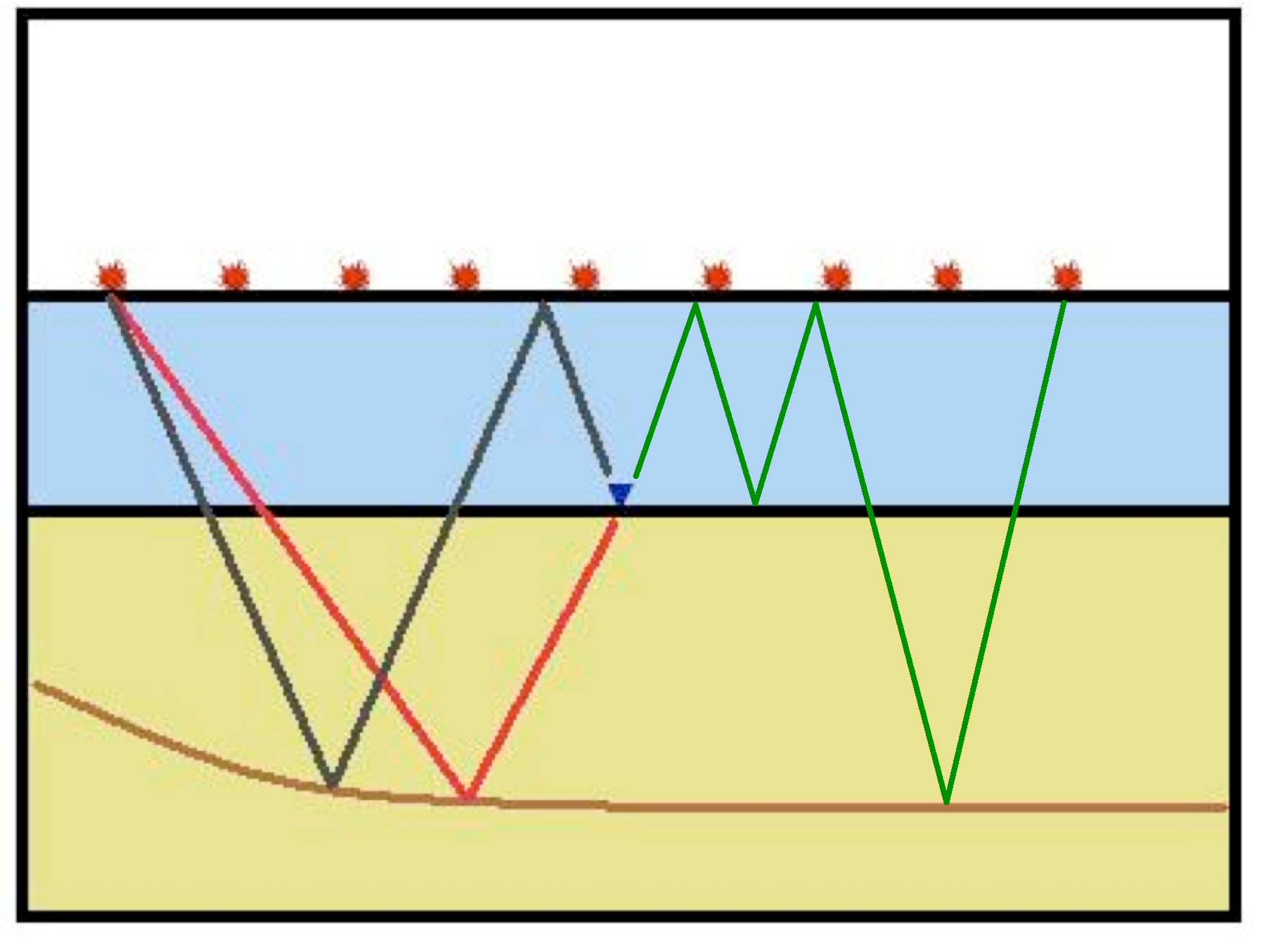|
|
|
|
Least-squares reverse time migration for the Cascadia ocean-bottom dataset |
There are several different processing schemes for ocean-bottom data. The traditional method, inherited from surface seismic processing, is to remove all free-surface multiples and to migrate only with the primary signal (Wang et al., 2009). Therefore, initial work on OBS data processing has been dedicated to the removal of free-surface multiples.
While multiples are often treated as noise, they are formed by the same source signal as primaries, but travel along different paths in the medium. The receiver ghost, also known as the mirror signal, is the next order of reflection beyond the primaries, with an additional reflection off the sea surface. For a deep water OBS survey, the subsurface reflection point of the receiver ghost is located at a greater distance from the receiver station than the primary (Figure 1). Therefore, the mirror signal can provide wider subsurface illumination than the primaries. Several authors have used the mirror signal in migrating OBS data (Grion et al., 2007; Dash et al., 2009; Ronen et al., 2005; Godfrey et al., 1998).
While mirror imaging can greatly expand the illumination aperture of an OBS survey, a similar concept can be applied to image with even higher-order surface-related multiples. Figure 1 shows that the subsurface reflection point of the next order of surface-related multiples, denoted as the double-mirror signal, is at an even greater distance from the receiver station than the mirror signal. This translates to an even wider subsurface illumination for the entire survey.

|
|---|
|
illum2
Figure 1. The subsurface reflection point of the double-mirror signal (in green double-line), the mirror signal (in black dashed-line), and the primary signal (in red solid-line). Note the double mirror image point is located at a greater distance from the receiver station than the mirror signal and the primary. |
|
|
In OBS acquisition, Muijs et al. (2007) made an early attempt to image primary and free-surface multiples together. This requires the data to be decomposed into up-going and down-going constituents, followed by downward extrapolation and a 2D deconvolution-based imaging condition. While this technique is computationally efficient, its image contains crosstalk artifacts caused by interference from up-going and down-going waves not associated with the same subsurface reflector. In contrast to existing methods, we use least-squares reverse time migration to optimally combine structural information provided by each order of multiple reflection into images that are free from crosstalk.
It is the objective of the data processor to put everything together and not overload the interpreter with alternative images. In our earlier work (Wong et al., 2010), we have shown how the information in the primary and mirror signal can be combined to give one coherent image. In this paper, we focus on the improvement from performing LSRTM with the mirror signal and the subsequent higher-order multiples. Ultimately, we wish to perform joint inversion of the primaries and all the down-going surface related multiples. The rest of this paper is organized as follows. We first discuss the theory of linear least-squares inversion, we then apply the inversion scheme to a field survey located on the northern Cascadia continental margin.
|
|
|
|
Least-squares reverse time migration for the Cascadia ocean-bottom dataset |